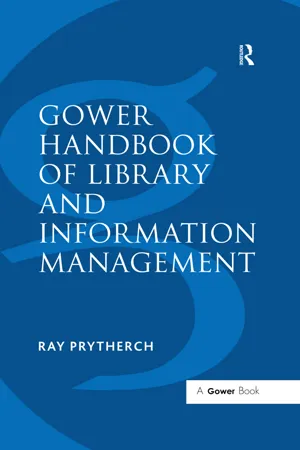Business
Effective Management
Effective management involves the coordination and organization of resources, people, and processes to achieve the goals of an organization. It encompasses planning, organizing, leading, and controlling activities to ensure efficiency and productivity. Effective management also involves decision-making, problem-solving, and fostering a positive work environment to drive success.
Written by Perlego with AI-assistance
Related key terms
4 Key excerpts on "Effective Management"
- Franz Schmithüsen, Bastian Kaiser, Albin Schmidhauser, Stephan Mellinghoff, Karoline Perchthaler, Alfred Kammerhofer(Authors)
- 2015(Publication Date)
- Routledge(Publisher)
Business management deals with multilayered problems within a complex, often unpredictable, environment. It requires a willingness to engage in a continual learning process and take entrepreneurial risks. It presupposes an ability to quickly recognise and evaluate changes both in the company and in its business environment. In this sense, management is an important prerequisite for deliberate entrepreneurial action. A qualifying and motivating factor in the work of active, self-confident managers is the search for innovation. Management above all means having a talent for leadership and for persuading employees to develop cooperation and implement shared goals making the company successful.Management derives from the Latin expression manum agere , ‘to lead by the hand’; it evolved to maneggiare in Italian and manier in French, with the meaning of guiding or, in a more general sense, handling a particular situation and leading an activity (Kluge 1975; Schneck 2006). Initially used in American English to refer to the work of organisers, agents and coaches working for artists or competitive athletes, it was introduced into other languages mainly in the second-half of the last century. When a new word is adopted from a foreign language, the activities it describes often take on new meaning. Today, management is more comprehensive and versatile than just leadership and guidance: it gives greater emphasis to active design, prospective activity relative to expected changes and personal responsibility for the consequences.Management is a process of decision making based on systematic information retrieval and analysis of the internal and external factors that determine the situation of an organisation or company (Bea and Haas 2005; Steinmann and Schreyögg 2005). Management activities structure business opportunities, identifying goals and possible solutions. They divide decision-making processes into phases for analysing complex situations and examining alternatives.General management practices address problems at the level of the company as a whole. However, business management also addresses the constituent entrepreneurial activities of the company, such as production, marketing, logistics, controlling and human resources. Although modern management practices have been developed mainly for commercial companies, they are not limited to the private sector. In public institutions and administrative bodies as well, a sound and comprehensive knowledge of management is an indispensable prerequisite for targeted and efficient action. The use of management tools has become increasingly common for publicly owned forests. A special case is the management of large forest estates owned by the state, which present in many ways pure business challenges rather than administrative or policy challenges. To implement this type of management approach, the public administration system must establish suitable conditions.- Ray Prytherch(Author)
- 2017(Publication Date)
- Routledge(Publisher)
A concise definition which will serve very well for this chapter is given by Hayes (1993):it differs from some other aspects of management in its concern for the whole organization and the direction in which it will travel; other types of management activity are essentially concerned with the effective operation of various functions to improve efficiency. A strategic approach to management is externally focused; and internal operations are considered primarily in relation to the positioning of the organization with regard to competitors and profitability – in the case of public sector organizations, survivability and resource acquisition are of key importance. Strategic management involves analysing the current position of the organization, generating and choosing possible alternative courses of action, matching these to the resource capabilities of the organization and then planning the implementation and review of the chosen strategy.strategic management is that part of the general management of organizations that emphasizes the relationships to external environments, evaluates the current status and the effects of future changes in them, and determines the most appropriate organizational response.He observes also that it is oriented toward long-range institutional goals and objectives and is concerned to identify these, create a political consensus on their validity, establish priorities among them, determine the necessary resources, and create the environment within which these resources can be assembled.He also notes that the overall concerns of strategic management include ‘goals and objectives, administration, constituency and market, sources and resources, competition and co-operation, politics, technologies, economics, social policy, and sources for staff’. It also revolves around new interpretations of the meaning of such concepts as ‘product’, ‘market’, ‘competition’, and performance criteria.This implies a certain measure of flexibility, and although strategic management should be proactive and assertive, strongly developed and committed professionally, it is nothing if it does not accept the reality of its environments. In this regard, it is a more powerful tool than strategic planning which may be less responsive.- Mathew Donald(Author)
- 2019(Publication Date)
- Emerald Publishing Limited(Publisher)
Management has a wide range of responsibilities that are quite distinct and separate to that of leadership, these include the way work is distributed, monitored and the way that employees interact with the tasks (Donald, 2017). After a review of the literature, management was defined as a skill of making decisions (Sadler-Smith, 2008), thinking (Khandelwal & Taneja, 2010) and alignment of input and outputs (Donald, 2017). Management task alignment involves efficiency and competitiveness (Singh & Shoura, 2006), people (Seilby, 2014), plans (Ketter, 2014) and control (Griffin & Van Fleet, 2013). Tasks expected to be managed are often not structured nor routine and thus cause difficulties that require resourcefulness to overcome them (Kanungo & Misra, 1992). Owing to the fast turbulent world that face managers today they may need to use intuition when making decisions (Sadler-Smith, 2008), rather than purely facts or data.The concept of management was derived from a systems perspective to organising activities (Likert, 1967), where the concept envisaged management as being responsible for the conversion of inputs into business outputs, allocating resources including capital and employees (Bordley & Pollock, 2012). The required skills of a manager are considered wide (Griffin & Van Fleet, 2013) with difficult choices and thus they often allocate resources to issues rather than opportunities (Drucker, 1963, 2006). Others have defined management with four functions of planning, organising, leading and control (Williams et al., 2016). Many managers do not know how to implement change successfully, despite understanding change importance and the expectation that they lead the change (Rosenberg & Mosca, 2011). New concepts are emerging for management, including elements of ethics and corporate social responsibility, yet the definitions are still broad and open (Nonet, Kassel, & Meijs, 2016). Specialised roles were created to manage risk, yet they failed to prevent the Global Financial Crisis (GFC) (Dionne, 2013).- eBook - ePub
Performance Management
Theory and Practice
- Susan Hutchinson(Author)
- 2013(Publication Date)
- CIPD - Kogan Page(Publisher)
The chapter begins by examining some of the definitions of performance management, and considers how interpretations and the practice of the concept have changed over time. It then goes on to explore how performance management can be strategic and integrated, and some of the challenges in operationalising this model. One of the key difficulties is how to translate strategy into action, and the balanced scorecard is a recent development which helps managers demonstrate the strategic linkages. The chapter takes a critical look at this approach and then moves on to consider how performance management should work at the operational level – in other words, as a process of interlinked HR activities. The potential benefits of performance management as a strategic management tool are summarised, before the chapter concludes with a look at the role of the HR function in strategic performance management. WHAT IS PERFORMANCE MANAGEMENT? The use of the term ‘performance management’ varies enormously, and in the HRM literature a vast array of definitions are offered, ranging from the very simple – ‘Performance management is managing the business’ (Mohrman and Mohrman, 1995) – to the more sophisticated. For DeNisi (2000), it is a broad range of activities that an organisation engages in to enhance the performance of individuals, with the ultimate aim of improving organisational effectiveness. Others go further describing it as a strategic and integrated process which aligns individual, team and organisational goals. For example, Aguinis (2009): a continuous process of identifying, measuring and developing the performance of individuals and teams and aligning performance with the strategic goals of the organisation. Armstrong and Baron (in CIPD, 2009a) describe performance management as: a process which contributes to the Effective Management of individuals and teams in order to achieve high levels of organisational performance
Index pages curate the most relevant extracts from our library of academic textbooks. They’ve been created using an in-house natural language model (NLM), each adding context and meaning to key research topics.



